What Neil Gorsuch's appointment to Supreme Court means for future of NCAA amateurism

At only 49 years old, newly sworn-in U.S. Supreme Court Justice Neil Gorsuch is poised to play a critical role in shaping American law for many years to come. One area of law that is subject to change is the legality of NCAA amateurism.
Broadly speaking, amateurism comprises the NCAA rules and policies that attempt to distinguish college athletes from professional athletes. To that end, amateurism dictates that college athletes are forbidden from receiving compensation outside of their athletic scholarships. Amateurism is often criticized as a disingenuous concept given that college sports, like professional sports, generate billions of dollars each year in revenue and seemingly everyone—the NCAA, conferences, schools, coaches, staff, television networks, advertisers, apparel companies and more—except the athletes share in the wealth.
While the Supreme Court recently declined to review Ed O’Bannon’s historic victory against the NCAA, there are various ways the Court could examine whether college athletes should be paid for their labor or for the commercial use of their names, images and likenesses, or both.
Gorsuch’s conservative philosophy seems inclined to favor the NCAA’s perspective. However, like with many judges, Gorsuch’s views are more complicated than a “conservative” or “liberal” label seemingly suggests. Indeed, he might ultimately surprise some of the key players in college sports—including college athletes.
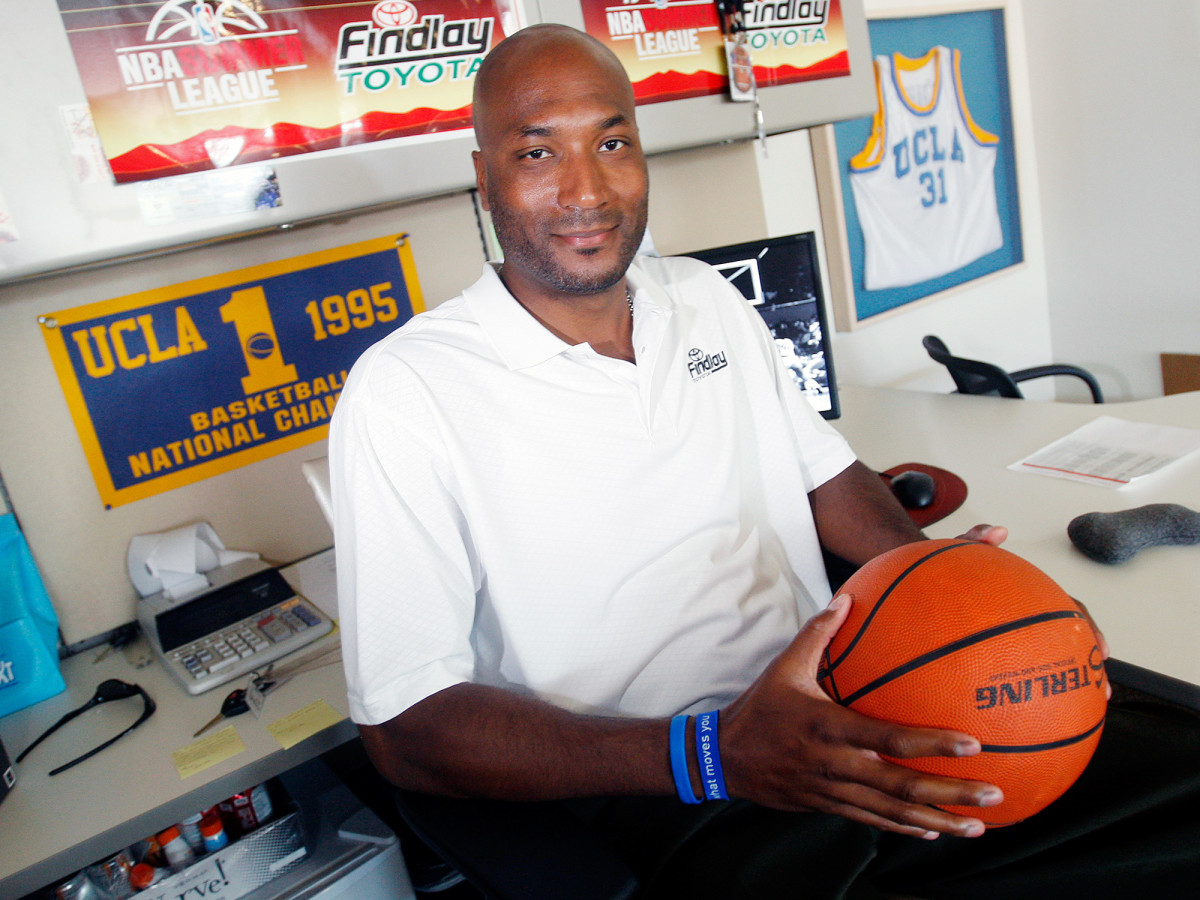
The legacy of O’Bannon v. NCAA and how NCAA amateurism could come before the Supreme Court
As a starting point, it is worth acknowledging the obvious: It is impossible to predict with any meaningful degree of certainty if and when the Supreme Court will review amateurism. During each Supreme Court term, which lasts from October till the following July, the justices usually hear only about 80 of the 7,000 to 8,000 petitions they annually receive. This works out to a review of about 1% of petitions. For a case to be among the relatively few picked, at least four of the nine justices must vote to grant a “writ of certiorari,” which means the facts and legal issues raised in the petition warrant further review.
Many seemingly important cases, including those that implicate millions of Americans, are rejected. As for accepted petitions, they often implicate an extraordinary important topic, such as the outcome of a presidential election (Bush v. Gore), the legality of a new federal healthcare law (NFIB v. Sebelius) or the constitutionality of voting restrictions (Shelby County v. Holder). Alternatively, an accepted petition might reflect two or more U.S. Circuit Courts of Appeals having issued irreconcilable decisions in similar cases: The Supreme Court is inclined to intervene when doing so would ensure that federal law is interpreted consistently across the country.
The Donald Trump of Alabama? Tommy Tuberville eyes outsider's bid for governor
The need for harmonious interpretation of federal law could become relevant as it relates to the O’Bannon decision. Both a federal district judge and a three judge panel on the U.S. Court of Appeals for the Ninth Circuit agreed with O’Bannon that NCAA rules setting the value of college athletes’ names, images and likenesses to $0 violated the Sherman Antitrust Act. As O’Bannon successfully argued, the NCAA and its member schools and conferences unlawfully joined hands to deny current and former D-I men’s basketball and football players compensation for their identity rights. Although the judicially-imposed remedy—that the NCAA must permit colleges to offer the full cost of attendance—was less impactful than some had hoped, the more important point is that O’Bannon proved the NCAA violated antitrust law.
Going forward, college athletes—whether they are current, former or even prospective college athletes—can use the O’Bannon ruling as favorable precedent. This is particularly true in the Ninth Circuit, where O’Bannon’s victory is mandatory authority. This means that judges who preside in Ninth Circuit federal courts must follow the O’Bannon ruling (in other federal circuits, the ruling is only persuasive authority and need not be followed).
So imagine a group of athletes filing an antitrust lawsuit in the Ninth Circuit that challenges NCAA restrictions on recruiting and transferring. These hypothetical athletes insist that colleges, which portray themselves as competitors, joined hands to unlawfully restrict competition and harm college athletes. The athletes would surely cite the O’Bannon ruling as favorable precedent since it advances the point that the NCAA has been shown to violate antitrust law in regards to amateurism. The O’Bannon ruling would thus make it more likely that these athletes prevail at the district court and appellate court levels. Perhaps such a victory, which would impact thousands of college athletes, attracts the interest of the justices.
As an alternative scenario, imagine that a different federal circuit appeals court rules on a case that is arguably similar to O’Bannon. Let’s say it involves an antitrust challenge by college players against a conference and its members over the commercial use of player images and likenesses in television and Internet advertisements for ticket sales. This circuit court, however, issues a decision in favor of the NCAA. In that situation, there may be a “circuit split” on how to interpret the applicability of antitrust law to the commercial use of players’ names, images and likenesses. As explained above, a circuit split is a relatively good candidate for Supreme Court review.
Also, although no such case is in play, it would not be surprising to see a high school athlete challenge NCAA recruiting rules on grounds that they are anti-competitive and violate antitrust law. It seems only a matter of time before high school athletes, who are clearly impacted by NCAA recruiting rules, join in on litigation concerning NCAA amateurism.
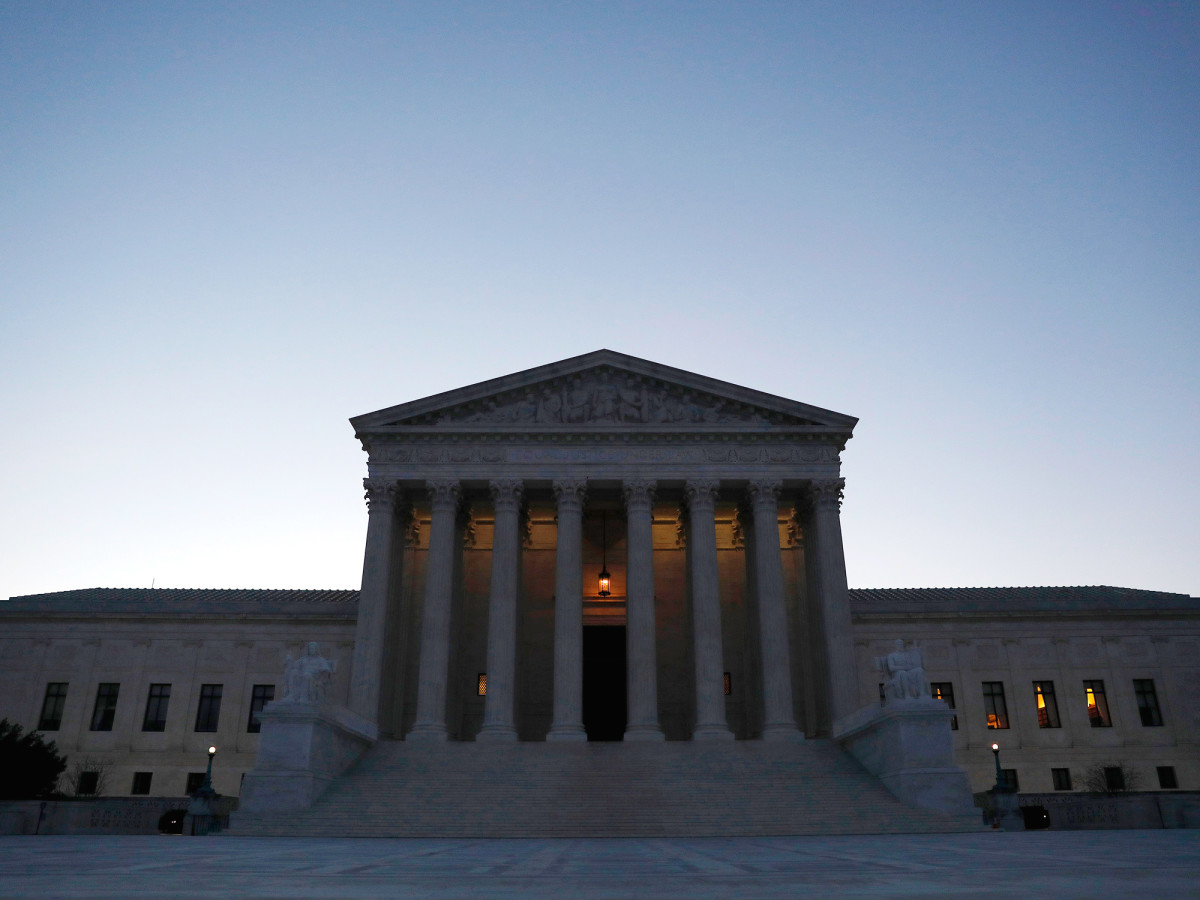
Jenkins v. NCAA and “college athletes are employees” cases loom large as potential Supreme Court petitions
One existing case aided greatly by the O’Bannon ruling is an antitrust lawsuit brought by Martin Jenkins, Nigel Hayes and other college athletes over the legality of capping athletic scholarships to tuition, room, board, books and fees. Sports attorneys Jeffrey Kessler and David Greenspan (the duo who argued for Tom Brady in the Deflategate case) filed the Jenkins case in 2014. It is now before the same judge who heard the O’Bannon case, Judge Claudia Wilken, and could go to trial in 2018. As the Jenkins case is in the Ninth Circuit, O’Bannon’s ruling serves as mandatory authority.
The lawsuit’s premise is simple enough: The NCAA, conferences and colleges have joined hands in an anti-competitive conspiracy to prevent athletes from being able to negotiate the real value of their athletic scholarships. As a result, Jenkins argues, players whose market value exceeds the value of an athletic scholarship are denied what they are rightfully owed.
As an illustration, consider how much money UCLA basketball star Lonzo Ball and his father, Lavar Ball, might have negotiated in an “athletic scholarship” if the value of that scholarship reflected the younger Ball’s market value. Lonzo Ball has been on the radar in the basketball world since he was a child, and NBA scouts attended his high school games. He won numerous awards for his play at Chino (Calif.) High and was widely regarded as the nation’s top point guard prospect.
It stands to reason that many top college basketball programs would have offered Ball well in excess of the value he just received through his UCLA full scholarship (for in-state UCLA students like Ball, a California native, that value is under $50,000, though that figure doesn’t include the hard-to-quantify value of national media exposure, elite coaching and training, etc.). Perhaps a school, eyeing an NCAA title, might have offered Ball $500,000 or even $1 million. This is true even though the school would know that Ball was likely only going stay in college for one year before declaring for the NBA draft. Such a school could rationalize the expense on projected increases in television ratings, attendance and apparel sales if Ball were on the roster.
In the view of Jenkins, the difference in value between what Ball received in a UCLA athletic scholarship and the value he would have received in a market-based athletic scholarship reflects an antitrust injury.
How the Ball family is beating the NCAA at its own game
To be clear, Jenkins doesn’t demand that schools pay more in athletic scholarships. He only demands that schools be able to pay more, if they so choose. If the Jenkins case goes to trial, the loser of it could appeal to the U.S. Court of Appeals for the Ninth Circuit. Such an appeal could take a couple of years. Thus, it might not be until 2020 or so when the Supreme Court would have a chance to review Jenkins.
It’s also possible that the Supreme Court could eventually address the related topic of whether college athletes are employees under the National Labor Relations Act or under the Fair Labor Standards Act. In 2015, the National Labor Relations Board dismissed a petition by Northwestern University football players that asked the NLRB to declare the players were employees. The NLRB, however, declined to rule on substantive grounds, meaning the issue could re-surface.
Also, last December, a three judge panel on the U.S. Court of Appeals for the Seventh Circuit ruled in Berger v. NCAA that track and field athletes at the University of Pennsylvania are not employees under the Fair Labor Standards Act and are thus not eligible for minimum wage or overtime pay. The panel reasoned that, “although we do not doubt that student athletes spend a tremendous amount of time playing for their respective schools, they do so—and have done so for over a hundred years under the NCAA—without any real expectation of earning an income.” In January, the Seventh Circuit declined to rehear Berger “en banc,” which would have meant other judges on the Seventh Circuit hear the case. A different federal appeals court, however, might interpret the Fair Labor Standards Act differently if presented with a similar case.
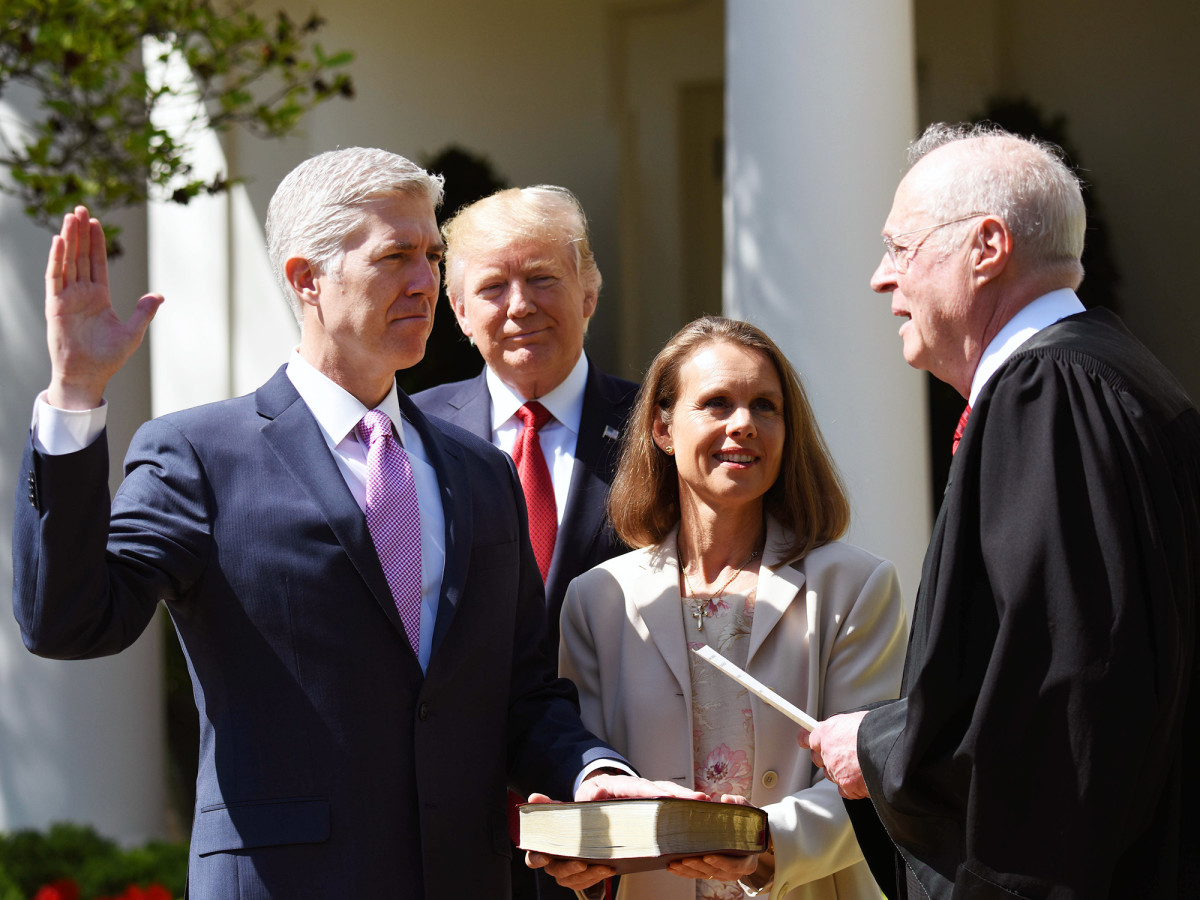
Justice Gorsuch’s likely ideology on NCAA amateurism
Although it may be some time before the Supreme Court considers NCAA amateurism, Gorsuch could, assuming good health, be on the Court for three or even four decades. So if the Supreme Court does tackle the topic in the approaching years, there’s an excellent chance Gorsuch will be one of the justices deciding it.
For the time being, Gorsuch becoming Associate Justice is commonly thought of as tilting the Court to a conservative majority perspective. By most accounts, the other eight justices include four relatively liberal or progressive justices (Ruth Bader Ginsburg, Stephen Breyer, Sonia Sotomayor and Elena Kagan) and four relatively conservative justices (John Roberts, Anthony Kennedy, Clarence Thomas and Samuel Alito).
This depiction, however, is more convenient than it is accurate. As shown through the Judicial Common Space, an empirical study by Washington University in St. Louis law professor Lee Epstein on judges’ ideologies, justices are not so much “conservative”/“liberal” as they are situated in unique places across an ideological spectrum. Epstein scores a centrist judge as 0.0, with more liberal judges scoring negatively and more conservative judges scoring positively. For example, while Justice Kennedy and Justice Thomas are both thought of as “conservative” justices and both were nominated by Republican presidents, Kennedy is much more centrist at 0.1 than is Thomas, who scores 0.6. Similarly, both Justice Breyer and Justice Ginsburg are often viewed as liberal, but Breyer (-0.3) is closer to the center than is Ginsburg (-0.5).
Stop complaining about Friday night college football
Where will Gorsuch place on the spectrum and what might it suggest about his views on NCAA amateurism? One clue is Gorsuch’s record as a judge on the U.S. Court of Appeals for the Tenth Circuit, where he served from 2006 to 2017. During that time, Epstein’s study finds, Gorsuch interpreted law away from the middle and towards the conservative side. As of 2015, Gorsuch scored a 0.5 in Epstein’s study. This suggests he will be more like Thomas than Kennedy.
The NCAA is likely relieved by evidence indicating that Gorsuch will be a conservative justice. Players who sue the NCAA over its amateurism rules are fundamentally asking for change and a sharp departure from the way things have been done for a long time. Players are more likely to prevail if the presiding judges see college athletes not merely as “students” in the traditional sense but also as economic actors who generate substantial revenue and who, outside of their scholarships, are denied access to that revenue. Likewise, players are better off with judges who are skeptical of businesses that restrict competition. Similarly, judges who see college sports as a business rather than a pastime or some other romanticized ideal are the kinds of judges who would likely be more receptive to player arguments.
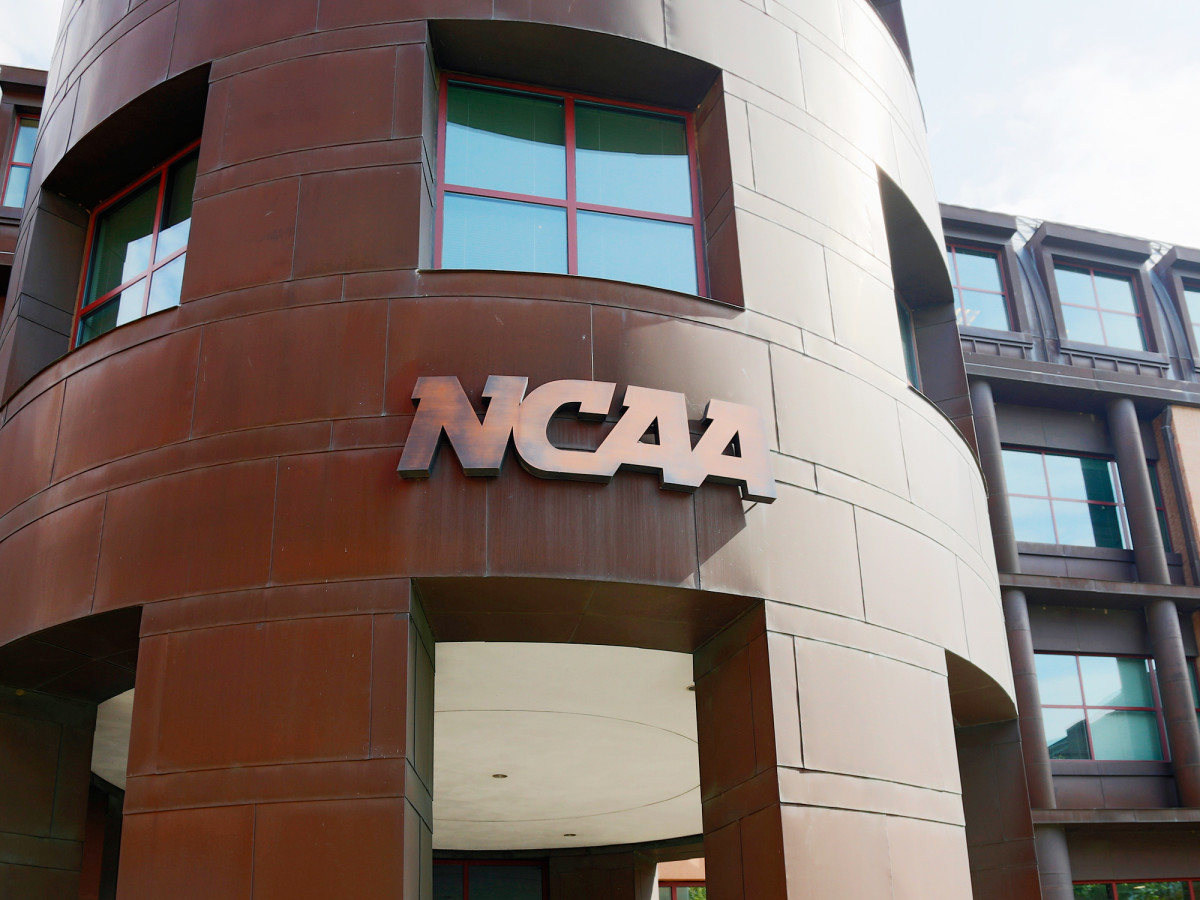
Gorsuch, a graduate of Oxford University, Harvard Law School and Columbia University, has not ruled on a case that directly involves NCAA amateurism. In fact, his views on college sports are not publicly known. He played baseball and soccer as a child and is known to enjoy fishing, hunting, skiing and other outdoor sports, though it does not appear Gorsuch played varsity sports at the high school or college level. That said, one of Gorsuch’s high school classmates at Georgetown Prep—where Gorsuch was elected class president—was a student named Brian Cashman. He grew up to become general manager of the New York Yankees and now speaks glowingly about Gorsuch.
Gorsuch does have ties to both sports and antitrust law through his work as an attorney. In the early 2000s, Gorsuch was an attorney for billionaire Philip Anschutz, whose Anschutz Entertainment Group owns various sports venues and teams across the globe. In addition, Gorsuch litigated antitrust cases while practicing at the Washington, D.C., law firm of Kellogg, Huber, Hansen, Todd, Evans & Figel in the 1990s.
As a new attorney in 1993, Gorsuch clerked for U.S. Supreme Court Justice Byron White, who led the NFL in rushing in 1938 and 1940. In the 1984 antitrust decision NCAA v. Board of Regents, White authored a dissenting opinion that argued the NCAA is mainly about education rather than profits. The NCAA no doubt hopes that Gorsuch agrees with his former boss, who favorably quoted another judge in writing the NCAA “exist[s] primarily to enhance the contribution made by amateur athletic competition to the process of higher education, as distinguished from realizing maximum return on it as an entertainment commodity.”
Wichita State addition moves AAC closer to Power 6, says conference head Mike Aresco
As he is noted for an engaging and accessible writing style, Gorsuch is comfortable employing sports analogies and metaphors to make his points. For example, in the 2008 decision Dudnikov v. Chalk & Vermilion Fine Arts, Inc., Gorsuch artfully referred to a bank shot in basketball as a means of explaining his reasoning on whether a party adequately notified another party about a legal claim:
Thus, while, as defendants emphasize, the [notice of claimed infringement aka “NOCI”] formally traveled only to California, it can be fairly characterized as an intended means to the further intended end of cancelling plaintiffs' auction in Colorado. In this way, it is something like a bank shot in basketball. A player who shoots the ball off of the backboard intends to hit the backboard, but he does so in the service of his further intention of putting the ball into the basket. Here, defendants intended to send the NOCI to eBay in California, but they did so with the ultimate purpose of cancelling plaintiffs' auction in Colorado. Their “express aim” thus can be said to have reached into Colorado in much the same way that a basketball player's express aim in shooting off of the backboard is not simply to hit the backboard, but to make a basket.
Also, while on the Tenth Circuit, Gorsuch ruled on several cases that might provide clues on his views about NCAA amateurism. The most prominent of those cases was Lisa Simpson v. University of Colorado Boulder, a 2007 decision in which Gorsuch joined in an opinion written by Judge Harris Hartz. The case involved two women who sued the University of Colorado under Title IX after being sexually assaulted by football players and recruits. The women established that the university had adopted a policy of “showing high school football recruits a ‘good time’” through “female Ambassadors” and was indifferent to sexual crimes that arose because of that policy. In an opinion extremely critical of the university and by extension college football, the panel ruled that a jury could find that the school violated Title IX when its football coach knew of sexual assaults occurring during recruiting and did not take any meaningful steps to prevent and correct the problem.
To be clear, the Simpson ruling is not about whether college athletes should be paid nor is it about antitrust law. Still, it suggests that Gorsuch is willing to scrutinize college sports and take a critical eye to a college sports culture that has been shown to endanger female students’ safety.
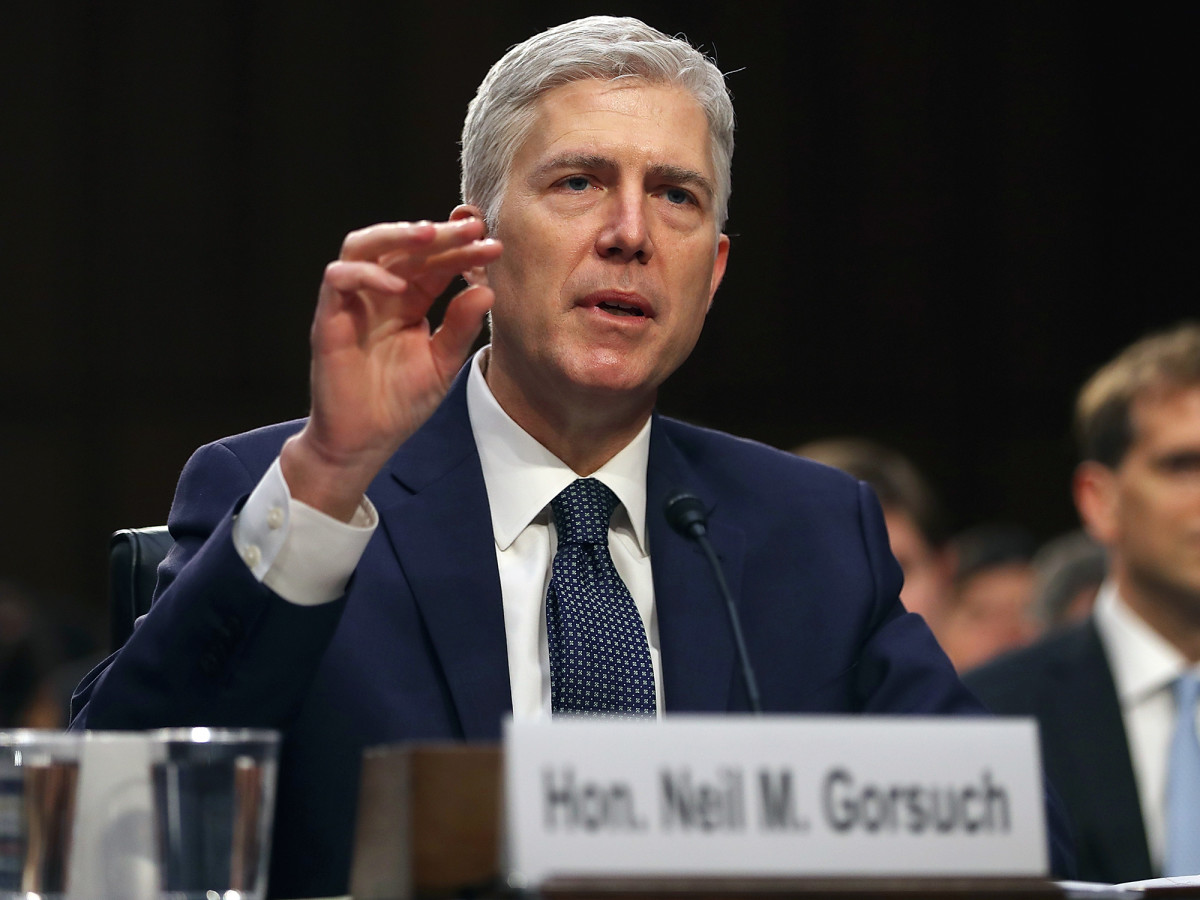
Gorsuch’s record on antitrust cases is a mixed bag as it relates to amateurism. For instance, in the 2013 decision Novell v. Microsoft, Gorsuch sided with Microsoft when Novell claimed the software giant acted as an illegal monopoly for operating system software. Gorsuch stressed that companies “have no duty to deal with their rivals” and that courts are not “central planners” for when and how businesses should share information with other companies.
Novell’s argument arose from a different area of antitrust law than when college players sue over amateurism—Novell claimed that Microsoft engaged in anti-competitive conduct as a monopoly whereas players claim the NCAA and its members conspire to engage in anticompetitive conduct. Still, Gorsuch’s reasoning does not indicate the kind of active or aggressive view of antitrust law that college athletes would prefer.
Likewise, in a concurring opinion in the 2016 decision Direct Marketing Association v. Brohl, Gorsuch offered an intriguing explanation of baseball’s long-critiqued exemption from antitrust law to make a broader point about precedent: Even when precedent from one decision seems logically incompatible with subsequent decisions, the precedent must be honored:
Years ago and speaking through Justice Holmes, the Supreme Court held baseball effectively immune from the federal antitrust laws and did so reasoning that the “exhibition of baseball” by professional teams crossing state lines didn't involve “commerce among the States.” Federal Baseball Club of Balt., Inc. v. Nat'l League of Prof'l Baseball Clubs, (1922). Since then the Supreme Court has recognized that other organizations offering “exhibitions” in various states do engage in interstate commerce and are subject to antitrust scrutiny. But though it has long since rejected the reasoning of Federal Baseball, the Supreme Court has still chosen to retain the holding itself—continuing to rule baseball effectively immune from the antitrust laws, if now only out of respect for the reliance interests the Federal Baseball decision engendered in that particular industry. And, of course, Congress has since codified baseball's special exemption. So it is that the baseball rule now applies only to baseball itself, having lost every away game it has played.
Gorsuch’s adherence to precedent is probably appreciated by the NCAA, which wants judges to be dubious of unwinding prior rulings that favor amateurism.
On the other hand, Gorsuch has stressed that antitrust law should advance competition, an argument that resonates with college athletes, who want colleges to compete in ways that recognize those athletes’ financial stakes. For instance, in the 2009 decision Four Corners Nephrology Associates v. Mercy Medical Center of Durango, Gorsuch remarked on “what the antitrust laws are about: They seek to advance competition, not advantage competitors.”
The bottom line: While Gorsuch’s views on amateurism are not certain, overall, they probably favor the NCAA. But like in the NCAA tournament, sometimes there are upsets at the Supreme Court. We’ll see.
Michael McCann is SI’s legal analyst. He is also an attorney and a tenured law professor at the University of New Hampshire School of Law.
